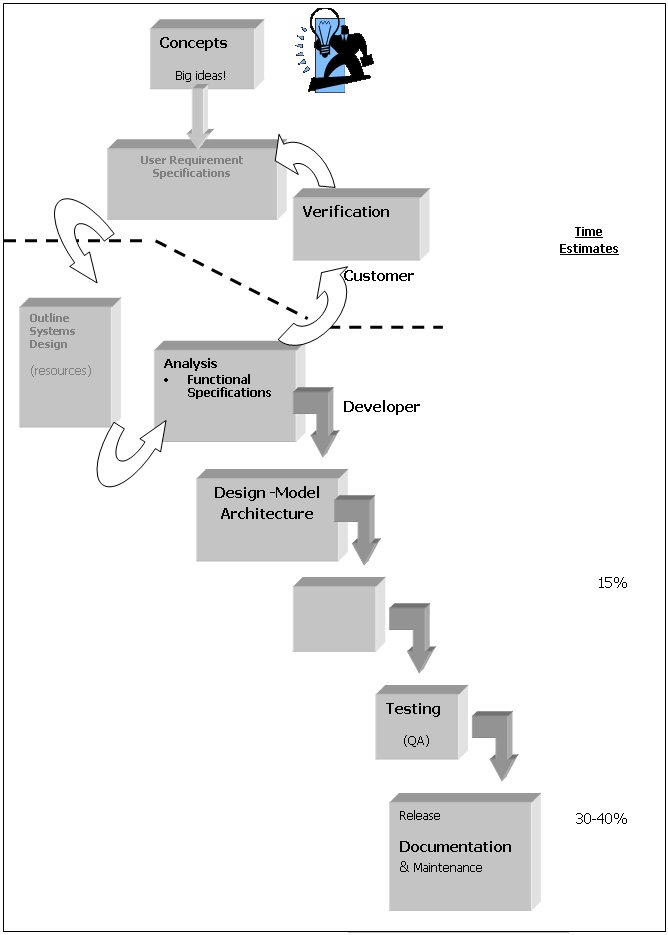Project Lifecycle Model
A project lifecycle consists of :
A natural language document that describes in details the system structure requirements and operations. This is usually written by someone who is not well versed in the industry. It usually contains ambiguities, contradictions and statements that might make the solution difficult, complex, prohibitively expensive i.e. unfeasible. This document is usually called a User Requirement Specification (U.R.S) document and is written in a natural language.

It is the role of an Analyst to tidy up this U.R.S document and turn into a more realistic Endeavour by deriving entities, entity sets and their relationships to be turned into:
A Functional Definition or Model of the application. The proposed solution should take into account of all resource implications i.e. define the platform and condition of operation and maintenance of the host system i.e. hardware (PCBs etc.) and software (Algorithms etc.) and associated development platforms and tools such as type of computer etc. The coding stage can be assisted by a CASE tool with automatic code generation features.
From the Model created, the Architecture of the systems should be established for,
the Implementation i.e. building the circuits, coding at the end of which,
Testing for functionality, verification & validation should be carried out.
Documentation should be generated in anticipation for the release of the system. This should contain user manual, technical manual for maintenance purpose.



